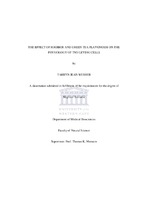| dc.contributor.advisor | Monsees, Thomas K | |
| dc.contributor.author | Webber, Tarryn Jean | |
| dc.date.accessioned | 2018-08-21T10:27:38Z | |
| dc.date.available | 2018-08-21T10:27:38Z | |
| dc.date.issued | 2018 | |
| dc.identifier.uri | http://hdl.handle.net/11394/6333 | |
| dc.description | Magister Scientiae - MSc (Medical BioSciences) | en_US |
| dc.description.abstract | Camellia sinensis (C.sinesis) and Aspalathus linearis (A.linearis) are popular beverages consumed in many countries. Consumption of these plants may protect against cardiovascular disease, neurodegenerative disease, various cancers and osteoporosis. Previous in vivo studies demonstrated the beneficial effect of C.sinesis and A.linearis on various sperm parameters. However, in vitro studies demonstrated that these plants may possess anti-androgenic properties that finally result in a reduction of testosterone production in TM3 Leydig cells. C.sinesis and A.linearis contain an array of phenolic compounds of which the major antioxidant activity is attributed to epigallocathechin-3-gallate (EGCG) and aspalathin, respectively.
Leydig cells are situated in the male reproductive testes, adjacent to the seminiferous tubules. The principal function of these cells is to produce testosterone which is vital for male sexual differentiation, gamete production and the development of secondary sexual characteristics. The aim of this study was to establish the effects of EGCG and aspalathin on TM3 Leydig cell physiology. | en_US |
| dc.language.iso | en | en_US |
| dc.publisher | University of the Western Cape | en_US |
| dc.title | The effect of rooibos and green tea flavnoids on the physiology of TM3 Leydig cells | en_US |
| dc.rights.holder | University of the Western Cape | en_US |

